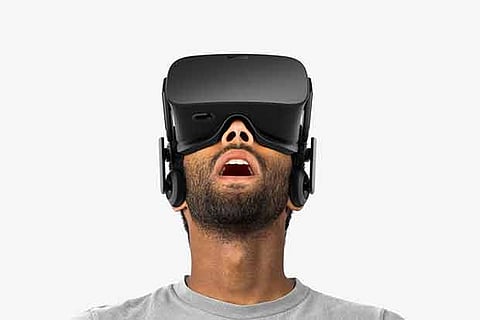

New Delhi
Soon, conferences and meetings will be held in 3D, using VR headsets. Get ready for the next big thing: XR — or “extended reality,” a term used to encompass VR (virtual reality), AR (augmented reality) and MR (mixed reality).
The XR revolution was going to come anyway, but the coronavirus pandemic will accelerate its emergence, according to Ferhan Ozkan, co-founder, with Rahel Demant, of VR First and XR Bootcamp, a Berlin-based network whose mission is to help institutions build XR capabilities. They also run courses and workshops for new XR developers and connect them to prospective corporate clients and employers. “Everything on a smartphone will soon be possible in XR, and in addition, a range of new applications will be invented that are only possible using VR/AR,” Ozkan said.
A key fact about XR is that it is much more immersive than previous generations of gaming tools, or existing business communication tools like video calls, Ozkan said, and therefore “much more emotionally engaging.” Games, 3D films, and interactive business applications will increasingly move to XR as virtual reality headsets like the Oculus Quest or HTC Vive Cosmos, or augmented reality headsets like HoloLens2, get better and cheaper.
These headsets will allow users to access spaces that combine real-world imagery with completely artificial environments. Computer-generated images and film images will be combined, using new tools like omnidirectional cameras and volumetric capture, or volucapping, which is a way of generating dynamic 3D virtual objects or avatars by filming a person or object from all sides simultaneously using many cameras.
People with VR headsets will soon be able to walk around in 3D VR worlds, seeing and interacting with virtual objects from any angle and any distance. Immersive XR will become the new norm for immersive 3D education. Imagine XR classes in chemistry, architecture, languages, mechanical engineering, cooking or trade skills, such as the safe operation of machinery.
But XR applications will range far beyond immersive gaming and education. It will encompass remote medical diagnostics, teleconferencing, filmmaking, journalism and more. Imagine being able to walk around and explore 3D versions of the Taj Mahal, a war-wracked suburb of Aleppo, the British Museum in London, or a Borneo wildlife park, almost as if you were there, with voice-overs explaining what you’re looking at, available whenever you ask.
VR will inevitably become the tool of choice for holding meetings. Suppose you work for a company that develops pharmaceuticals. Why would you choose to look at a flat screen divided into half a dozen meeting participants on a Skype or Zoom call about the design options for a new class of antiviral drug molecules when you could don your VR headset, walk around a virtual meeting room, play around with 3D virtual models of the molecules using your VR gloves, and chat with life-size 3D avatars of your colleagues? On April 9, a volunteer team of experts from several companies convened by an XR manager from Deutsche Telekom released “A Global Resource Guide to XR Collaboration,” a 60-page document intended to serve as an entry point for anyone interested in getting involved in using XR for interactive collaboration.
The writer is a journalist with Deutsche Welle
Visit news.dtnext.in to explore our interactive epaper!
Download the DT Next app for more exciting features!
Click here for iOS
Click here for Android